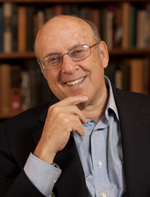
Jeffrey Carduner, Aesthetic Realism consultant, writes:
“Even Now, a World to Treasure” does something that is magnificently kind and scientific. It shows that in our present time of so much worry, even a terrible virus can be used to see and know what is true about reality and about ourselves. What an encouragement, what an education is here! You’ll be moved, you’ll feel reality makes sense and can be known and honestly liked, as you read the beautiful, surprising, great “Even Now, a World to Treasure,” the newest issue of The Right of Aesthetic Realism to Be Known.
The commentary by Ellen Reiss begins:
Dear Unknown Friends:
We are serializing a 1974 lecture by Eli Siegel that is of beautiful importance in terms of philosophy, literature, and the life of everyone. It is titled Long Ago for Liking the World. And it is very much about the question I have been commenting on in recent issues, ever since life in America and elsewhere changed markedly because of Covid-19. Here again is that vital question, presented by Mr. Siegel—which, for the good of our minds and lives—we urgently need to ask and try to answer:
Is this true: No matter how much of a case one has against the world—its unkindness, its disorder, its ugliness, its meaninglessness—one has to do all one can to like it, or one will weaken oneself?
Early in the lecture we’re serializing, Mr. Siegel says: “Whether we’re doing all we can to like the world honestly, is the criterion in every aspect of life.” Using J.D. Belton’s Literary Manual of Foreign Quotations, he discusses phrases and statements valued in literary history. His purpose, he says, is “to present evidence, with what I call an astute helter-skelter quality, for the fact that the world might be liked.”
As he does, he is also commenting on this great Aesthetic Realism explanation: The one solid basis for liking the world is to be found in all authentic art. That is—art sees reality so truly that the structure of the world, the oneness of opposites, is what we hear, see, feel, perceive in a work of art. A loved melody is always, like reality itself, the oneness of continuity and change, depth and clarity. In a good work of science fiction, the strange is not only strange, but inseparable from the everyday. When dance of any kind is beautiful, it is reality’s weight and lightness at once. And this very structure of the world, brought truly to us by the artist, is felt as beauty, and is beauty. That is true whatever the artwork’s subject, whether happy, sad, or bewildering.
A Virus—What Does It Stand For?
I have been writing in recent issues about what it means to use this time of pandemic to like—not it, of course—but the world. I’ll continue to do so now, in relation to the functioning of a destructive virus itself. A virus is horrible, and this “novel coronavirus” certainly is. But what is the principle in it? Does a virus represent anything besides itself? Does it stand for a way of seeing, a way of being and acting, that is in people? And can we, must we, use this awful thing that has come to us to be against what it stands for, what’s like it anywhere, including in us? The answer is yes. And if we use the coronavirus that way, we will be using it to like the world.
I’ll be very plain. A pathogenic virus symbolizes contempt—that in the self from which, Aesthetic Realism shows, all human evil arises….Read more